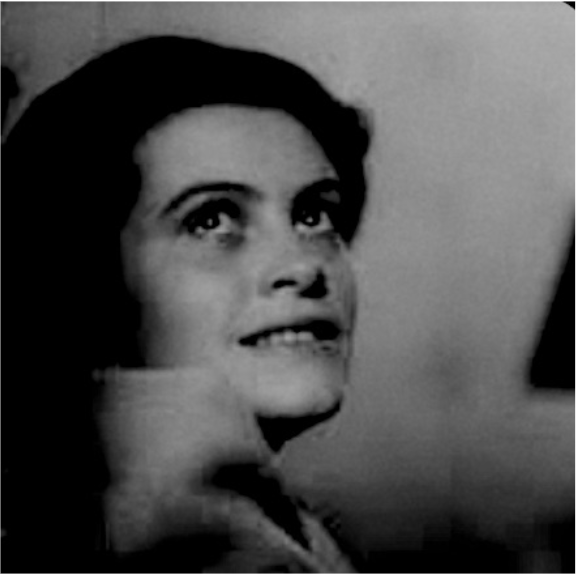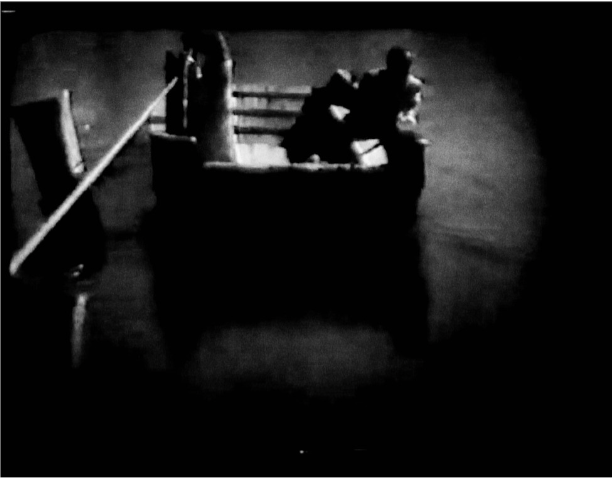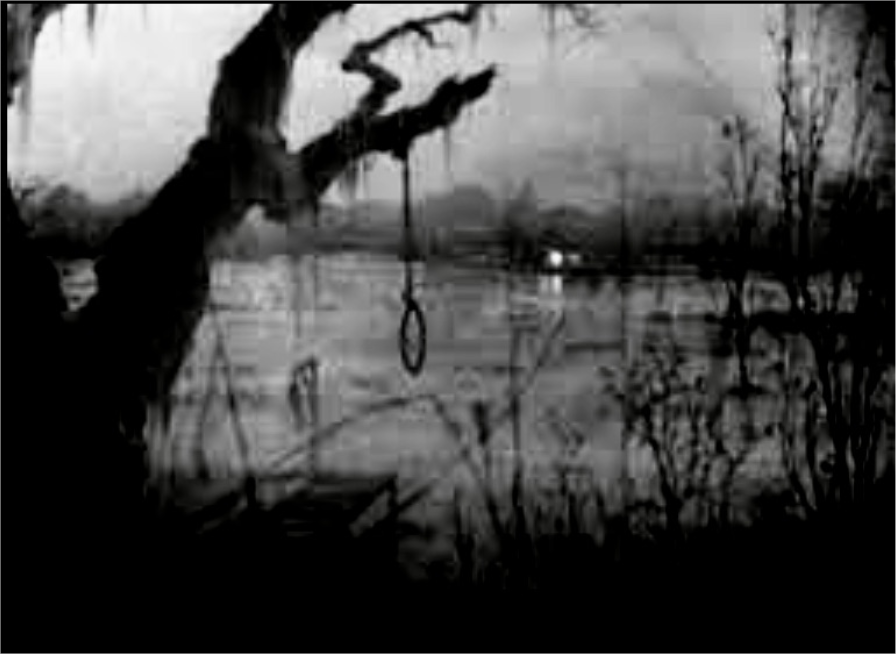Note: For an optimal reading experience, please ensure your browser is rendering the page at 100% zoom ("Cmd/Ctrl +/-").
Ferry Me Across Time and Tide: Fährmann Maria’s Weimar Nachklang
TOM GUNNING
Weimar cinema has never shaken its legacy of coming “From Caligari”, even if its identification as “Expressionist” has been subjected to endless critique. But while the complex heritage of Expressionism relates only to a few admittedly influential Weimar-era films, silent German cinema’s links to a cinema of the uncanny persists, like a half-remembered nightmare that refuses to fade. In our cultural memories, Weimar screens remain haunted (L’écran démonique). My brief contribution to this dynamic website considers Weimar’s uncanny cinema through its afterlife – or, perhaps better, its Nachklang, “echo or resonance.” I propose a fascinating film, little known outside of Germany, Frank Wysbar’s (sometimes spelled Wisbar) Fährmann Maria from 1936. Although I do not know the films of the Third Reich as well as I know the Weimar films (and perhaps other scholars could situate Wysbar’s film better than I), Fährmann Maria feels to me like a film gone astray from the earlier era. This untimely resonance draws me to the film and leads me to some speculations about the relations between eras and genres.
With its strongly symbolic landscape and nearly allegorical figures, Fährmann Maria resembles less a horror film (even though it was a mention in William K. Everson’s Classics of the Horror Film that first made me aware of it) than a Märchen, a fantastic tale – an aspect that defines the uncanny genre in Weimar. Rather than the threatening monsters of Dracula (1931) and Frankenstein (1931), a figure of Death itself confronts ferryman Maria. As Tony Kaes said to me, this symbolic figure recalls Lang’s Der müde Tod (1921), while anticipating Bergman’s The Seventh Seal (1957).
The claim that Weimar’s Märchen films such as Der müde Tod or Nosferatu (1922) inspired the later international horror genre need not be dismissed as a lazy search for progenitors. The international horror films that emerged at the end of the twenties and early thirties often explicitly acknowledged Weimar inspirations: as in Rex Ingram’s The Magician (1926) (with Weimar star Paul Wegener as the lead) or Jean Epstein’s La Chute de Maison Usher (1928) (with its homage to Nosferatu in its opening scenes).
I propose we can trace a unique Weimar tone which constitutes one of the currents of the horror film genre, yet maintains its own atmosphere and themes, and which persists after the official end of Weimar culture.
Unfortunately, I have never seen a good print of Fährmann Maria but have had to rely on video copies from various sources. Nonetheless, its eerie power and visual atmosphere casts a spell even in blurry versions. The story is simple:
Maria (Sybille Schmitz), a wandering outcast without official papers, takes the gender-bending job of Fährmann after the death of the old ferryman who had supplied passage across a wide river or inlet. The ferryman (Karl Platten) had been taken by a mysterious figure in black (Peter Voss) who had summoned him at night for a final trip across the water. In her new job Maria is summoned by a nighttime call for her ferry, but this proves to be a wounded soldier (Albert Mog) fleeing pursuing horsemen from an invading army. Maria hides him in her little hut and nurses him back to health. However, on the eve of the village harvest festival he suffers a relapse and Maria finds the figure of Death has summoned her and her ferry to claim him. Asked if she ferried a wounded soldier, she misleads Death to the village festival. The entrance of this ominous figure casts a paralyzing spell over the villagers and seems to mesmerize Maria, especially as he dances with her. She flees from him to a church, but it offers her neither release nor sanctuary. She agrees to take Death to her hut but begs him to spare the soldier’s life because she loves him. Death is obdurate, but as Maria guides him through the marsh, he becomes caught in the quicksand and sinks from sight. The soldier has now recovered, and he and Maria take a final ferry trip bound to his homeland.

Sybille Schmitz as Ferryman Maria

Peter Voss as the figure of Death
Treatments of this theme of Death and the Maiden are international and nearly eternal. Related images from the danse macabre tradition appear in paintings from Hans Baldung to Egon Schiele; in musical form in Schubert’s string quartet; with literary instances from Matthias Claudius’ poem which Schubert set to music, to plays by Elfriede Jelinik and even recent graphic novels. In all forms, and for several centuries, German instances of the theme are particularly striking. Wysbar’s film owes its truly haunted quality not only to these sources and themes but to the powerful cinematography by Franz Weihmayr (who shot several of Sirk’s German films, Thea von Harbou’s Elisabeth und der Narr (1934) and Wysbar’s Anna and Elisabeth (1933)), but perhaps most centrally to the performance and the physiognomy of Sybille Schmidt. Schmidt has to my mind a truly unforgettable face which made her performance as a suicide in Wysbar’s subsequent film Die Unbekannte (1936) unsettling. Of course, her earlier performance in Carl Dreyer’s Vampyr as the vampire’s victim would seem to have inspired Wysbar’s treatment. Her almost swollen lips and sharp teeth give Schmidt’s face a simultaneously skull-like, yet sensual quality, making her the perfect embodiment of the film’s energies of Thanatos and Eros.

Sybille Schmitz in Vampyr
Wysbar’s and Weihmayr’s use of the natural landscapes around the Luneberg Heath and Schmidt’s physical presence rather than traditional Expressionist devices of set design and mask-like make-up familiar from the Weimar classics create an eerie naturalism. Although some of the film (such as scenes in the village) is shot on sets, other than the dimly lit church, they carry little mood. It is the inlet with its ferry, the tall cypress trees and the watery muck of the marsh that create the film’s brooding atmosphere. The night scenes occur in a strange semi- twilight (probably due to careful use of filters) while frequent low angles make Death and the Maiden loom in the frame, providing a supernatural atmosphere without use of Expressionist sets or special effect. The film seems to discover a new possibility for the unheimlich film, drawing on themes and images from the Weimar era, but with a new respect for the photogénie of nature (evident also in the montages of seasonal transformation that convey the year’s passage).

Night shots in Fährmann Maria

I am not sure how unique this approach was in films of the Third Reich, but Fährmann Maria has the feel of a curtailed experiment. The apparently negative judgement of Herr Goebbels on the film may indicate that this stylistic approach that would not be officially sanctioned. Wysbar emigrated to the US where he made B-films and was a pioneer in television drama. His 1946 film Strangler of the Swamp for the poverty row studio Producer’s Releasing Corporation took the central motif of a haunted ferry (and a ferrywoman named Marie) from his German film to create a fog-drenched and often effectively atmospheric film.

Frank Wysbar’s Strangler of the Swamp (1946)
With minuscule budgets and shooting schedules, PRC provided a refuge for Weimar refugees like Edgar G. Ulmer and Eugen Schüfftan, and the cast of Strangler of the Swamp seems to exemplify the range of talent Poverty Row studios attracted, from Hollywood wannabes to has-beens. Maria is played by Rosemary LaPlanche, “Miss America” of 1941; her endangered lover by Blake Edwards, future Hollywood auteur; and the phantom strangler (the supernatural version of the Fährmann’s allegorical Death) by Charles Middleton best known as “Ming the Merciless,” iconic nemesis of the Flash Gordon serials. Perhaps ironically Strangler of the Swamp with its monstrous special effect of the strangler appearing in superimposition, simultaneously resembles a Hollywood B-horror film and a silent Weimar film, due to it being filmed entirely on sets designed to evoke an unreal haunted place. (Roderick Heath’s comparison of the two films in his on-line Film Freedonia.com acutely traces their intertwined themes).
We witness here a visual and symbolic motif from the German Renaissance migrating through German silent film into the era of the Third Reich and sound film and finding its final Nachklang at a Poverty Row studio on LA’s Santa Monica Boulevard. Genre could be partly described as patterns that persist for decades and across nationalities. But it might be worthwhile to trace a thread of specificity across various incarnations and situations which carry a consistent sense of a unique tradition and its motifs. I believe Fährmann Maria is a glorious instance of this.
Tom Gunning is Professor Emeritus in the Department on Cinema and Media at the University of Chicago. He is the author of D.W. Griffith and the Origins of American Narrative Film (University of Illinois Press, 1986) and The Films of Fritz Lang; Allegories of Vision and Modernity (British Film Institute, 2000), as well as over hundred and fifty articles on early cinema, film history and theory, avant-garde film, film genre, and cinema and modernism.